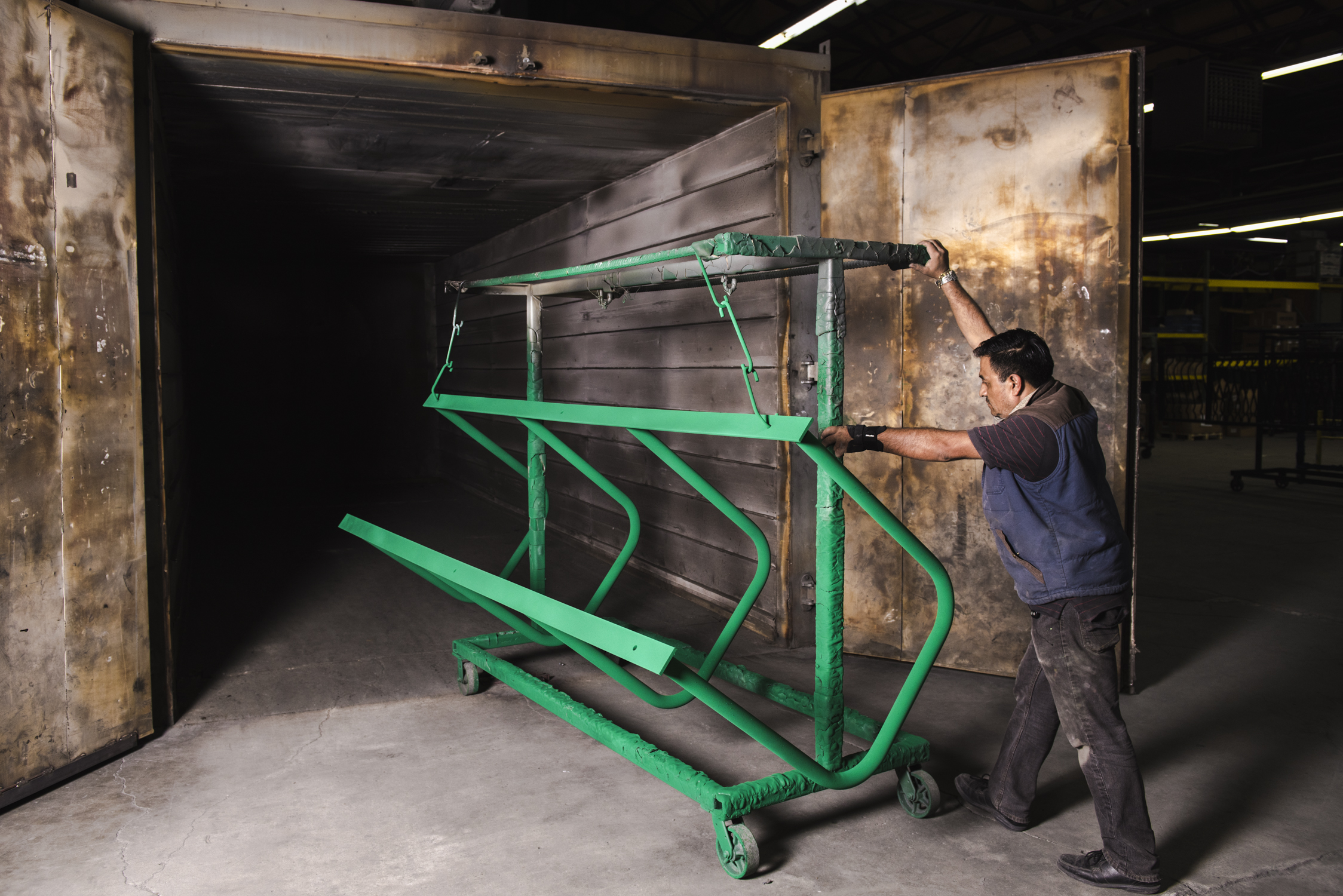< Back to Finish Types
Our Powder Coating Process, step-by-step
1. Cleaning
For best results, powder coating must be applied to an impeccably clean and uniform surface. Pre-treatment agents are used to remove grease, dirt, and debris before coating can begin.
The dark grey racks seen here are newly made, but still incomplete and covered in metal grit and grease. Without a tough finish, they would quickly rust in humid or outdoor environments.
2. Sandblasting
The bike rack is sprayed with sand grit, which acts as an abrasive to texturize the surface of the rack. This texture allows the powder coating to stick better and last longer. After sandblasting, an air compressor is used to blow any remaining dust off the rack.
3. More Cleaning
The rack is cleaned again with specialized pre-treatment agents.
4. Pre-Treatment Coating
Zirconium phosphate is applied to the rack. This liquid compound coats the clean, treated surface metal, creating a stronger material that resists corrosion. It also helps the powder coating adhere to the surface.
5. Hanging for Conductivity
In preparation for powder coating, the bike rack is hung so that the entire surface can be treated. Racks are hung with metal hooks, which conduct an electrical current to ground the rack during the powder application.
6. Charged Powder Application
The powder is a finely ground mixture of polymers, pigments, and other additives. When it is sprayed onto the bike rack using an electrostatic gun that adds a positive electrical charge to the powder, the charged powder particles are attracted to the opposite charge of the metal rack and stick to the surface.
7. Oven Curing
The racks are moved into a large commercial oven where they are heated to cure the powder. The heat causes the powder to undergo a chemical reaction, creating new molecules that bind tightly together. This produces a dense, uniform skin on the bike rack. Once cured, racks are then removed from the oven and allowed to cool. The powder hardens as it cools into a solid, durable coating.
8. Inspection
Each piece is inspected to ensure the powder coating is consistent. The thickness of the coating is measured and tests are performed to assess how well the coating has adhered.
9. Packaging
Finally, after passing inspection, each piece is carefully wrapped and packaged for delivery to your site.











